New 100,000-hp Marine Diesel Engine
The world’s biggest engine is the Wartsila-Sulzer RTA96-C. It is a turbo charged two stroke diesel engine, and it
is the most powerful and efficient low revolution engine in the world today. The
Wartsila-Sulser is manufactured by the Aioi Works in Japan and is part of Japan’s
Diesel United Ltd engine manufacturers. It is 89 feet long, 44 feet wide, and weighs
2000 tons.
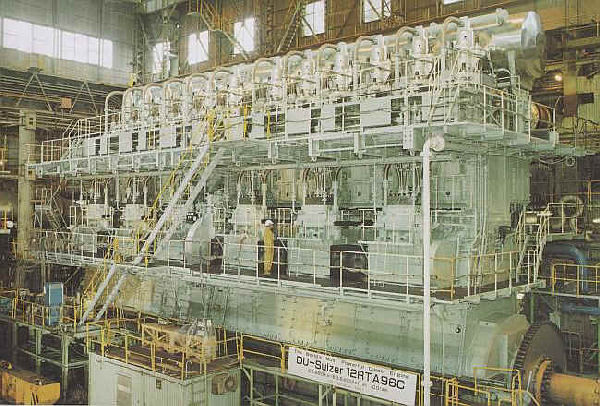
|
|
This 12-cylinder diesel engine develops 100,000-hp at 102 rpm, but its “best cruise” is at 90 rpm where it burns only 1,666 gallons per hour. |
After a long absence from these pages our trusty reader, Bill Noble, has hauled
his 42-footer for the winter and is finally back in Florida digging through the
Internet looking for “must see” pictures and material for BoatTEST’s readers. As
always, we pay Noble in 6-packs of Coors Light for his submissions and you, the
readers, tell us how many he should be paid – on a scale from 1 to 4 packs. Please
look over the material and register your payment suggestion below.
These large engines are designed to power the world's super oil tankers and large
container ships. They are built to the ship owners preferences. They usually request
an engine construction of a single unit and single propeller design for ease of
maintenance, and not surprisingly any later troubleshooting. A single unit and single
screw design has also proved over time to have a longer life span than double or
even quad screws.
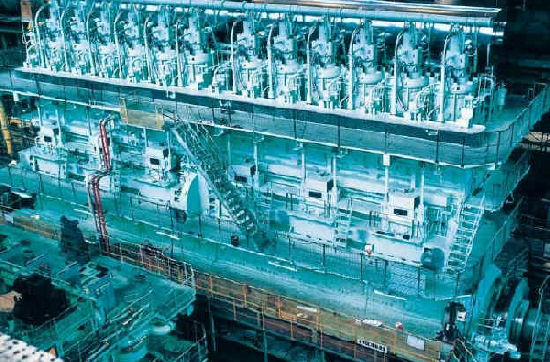
|
These engines are built in 6, 8, 10, 12 and 14 cylinder configurations. All the
engines are straight or 'inline'. The diameter of each cylinder is 3 foot 2 inches
with a stroke of 8 foot 2 inches. The 12 cylinder version weighs in at 2000 metric
tons and delivers 90,000 horsepower at 100 revolutions per minute, with best fuel
economy at 53,244 hp at 90 rpm. When I mention economy, the 14 cylinder engine for
example with a displacement of 25,480 Liters ( 1.56 million cubic inches ) burns
up 1,660 gallons of crude ("bunker") oil every hour.
The Mathematical calculation: 1,660 gallons/per hour = 39.5 barrels of crude oil/used
per hour = $2,844. These figures are worked out from the basis of crude oil @ $72
a barrel*. $2,844 every hour the engine runs or 27.6 Gallons which is $46.00 every
minute or 76 cents a second! That is of course if the ships buy oil at trade price
-- if not then these figures are the absolute minimum. ( * at time of publishing
)
In the image below a worker at the plant is finalizing work on the cylinder block.
This image shows the piston sleeves. The worker could quite easily have a nap inside
one of the bores and no one would notice!
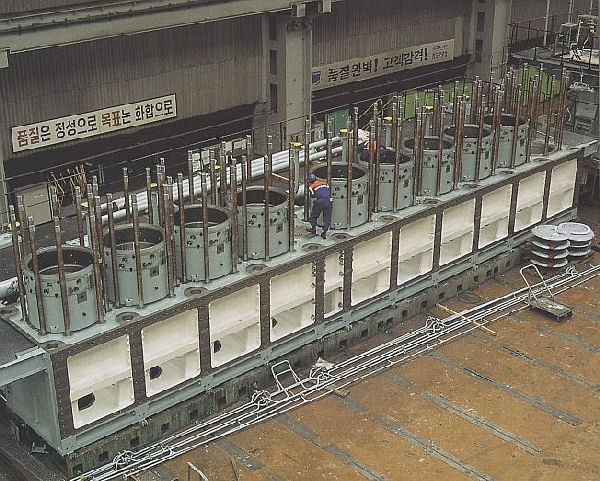
|
Below are the pistons that will soon be fitted into the engine. Unlike normal car
sized pistons these 3 foot diameter pistons incorporate lots of holes and it is
through these holes that oil is injected through valves to keep all the working
parts at a maximum low wear tolerance. Despite the colossal amounts of power output
produced by these engines, surprisingly low wear rates have actually been recorded.
Cylinder liner wear for example is only about 0.03 mm down for every 1000 hours
of engine use. It must be remembered here that these engines work at about 20 times
slower than a normal 2.0 Liter car engine and this is a major contributor to the
life of the engine.
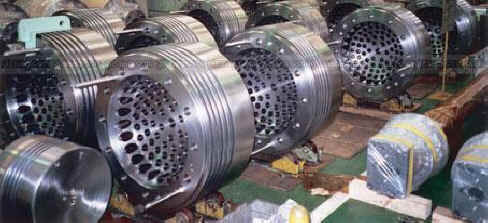
|
The image below depicts the 300 ton crankshaft of the 10 cylinder engine. You may
notice here that there are steps on the wall of the casing to climb down into the
engines sump!
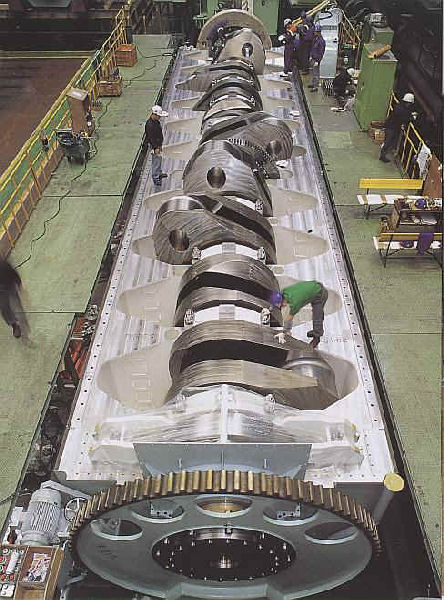
|
In the image below the pistons' shell bearings are being fitted into the engine
block. They are lowered into place by a crane and guided in by two workers and a
supervisor. They keep all surfaces of the engine clean at this stage as any grit
or dirt could later add wear to the engine or worse destroy it, so the workers are
wearing special cloth overshoes so as not to leave any abrasions on the fine working
surfaces. Also you may notice that sheeting is covering the rest of the engines'
crankcase bearing housing to keep the dust off. These engines cost many millions
upon millions of dollars; in fact, more than the ship itself that they are installed
into.
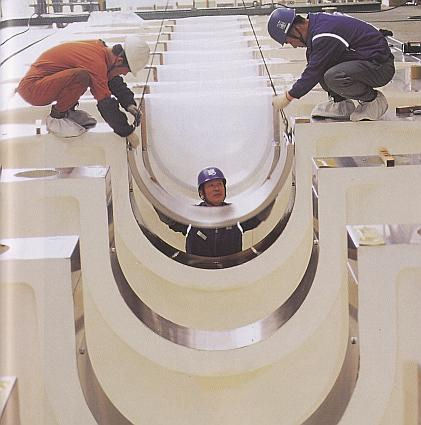
|
100,000-hp was actually achieved on a test bed in the workshop with the 14 cylinder
model, running the engine flat out at just under 102 rpm. 102 rpm may sound slow
compared to a normal sized car engine that operates at about 2-4000 rpm, but when
an engine is as big as this fast engine revolutions are made obsolete by the sheer
power output.
How many 6-packs should we pay Mr. Noble for his photo submission? (Max 4)